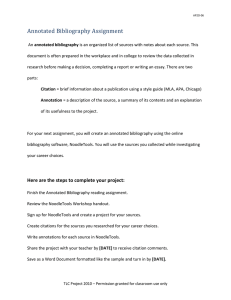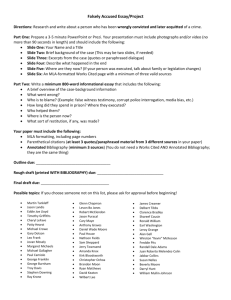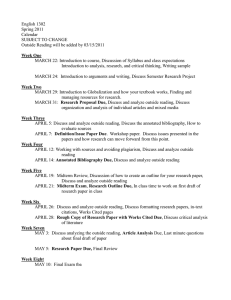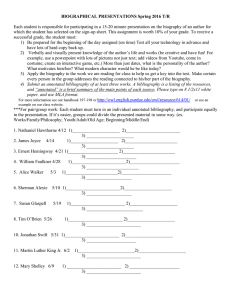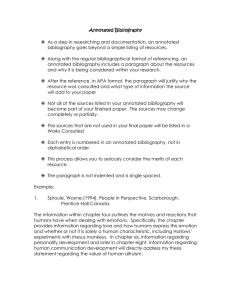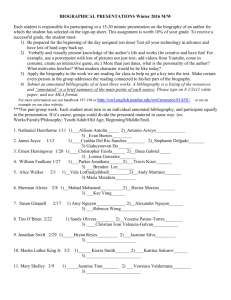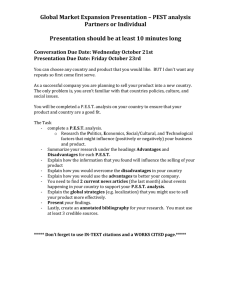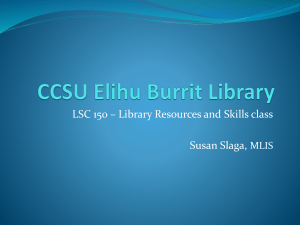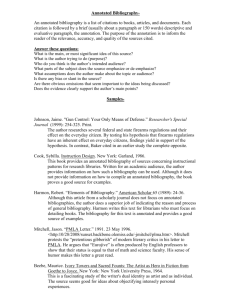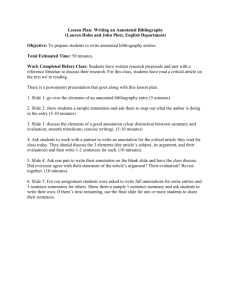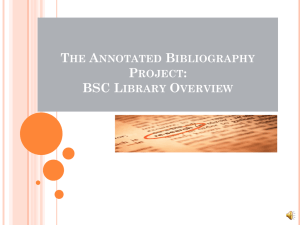Global_History_Annotated_Bibliography_Rubric-5
advertisement
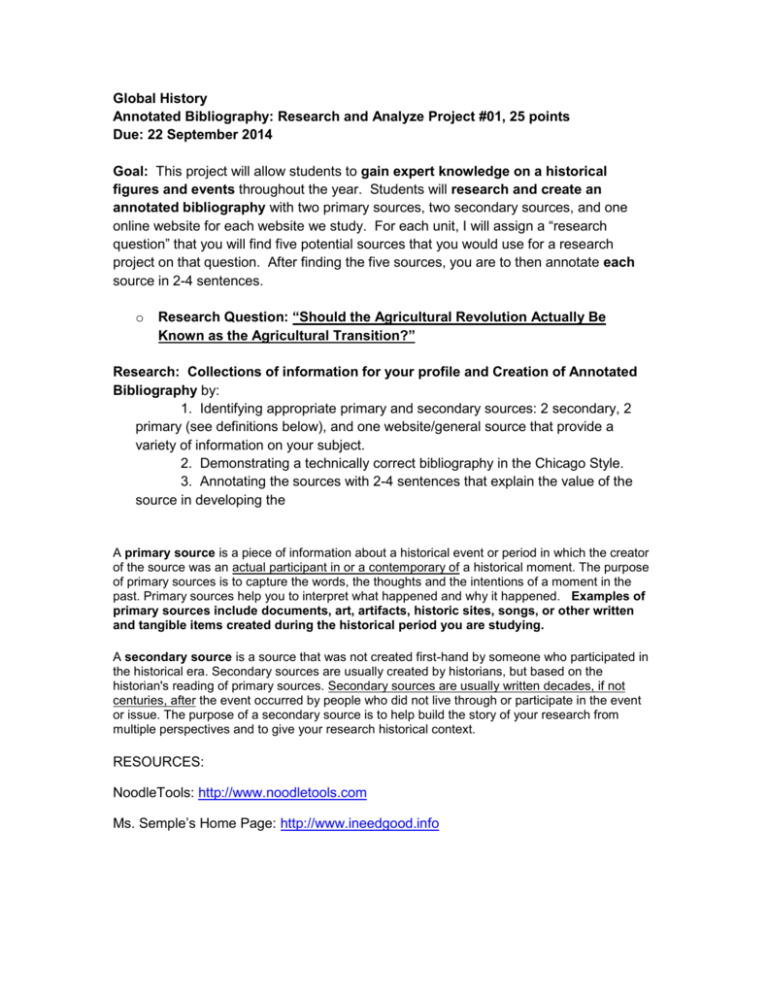
Global History Annotated Bibliography: Research and Analyze Project #01, 25 points Due: 22 September 2014 Goal: This project will allow students to gain expert knowledge on a historical figures and events throughout the year. Students will research and create an annotated bibliography with two primary sources, two secondary sources, and one online website for each website we study. For each unit, I will assign a “research question” that you will find five potential sources that you would use for a research project on that question. After finding the five sources, you are to then annotate each source in 2-4 sentences. o Research Question: “Should the Agricultural Revolution Actually Be Known as the Agricultural Transition?” Research: Collections of information for your profile and Creation of Annotated Bibliography by: 1. Identifying appropriate primary and secondary sources: 2 secondary, 2 primary (see definitions below), and one website/general source that provide a variety of information on your subject. 2. Demonstrating a technically correct bibliography in the Chicago Style. 3. Annotating the sources with 2-4 sentences that explain the value of the source in developing the A primary source is a piece of information about a historical event or period in which the creator of the source was an actual participant in or a contemporary of a historical moment. The purpose of primary sources is to capture the words, the thoughts and the intentions of a moment in the past. Primary sources help you to interpret what happened and why it happened. Examples of primary sources include documents, art, artifacts, historic sites, songs, or other written and tangible items created during the historical period you are studying. A secondary source is a source that was not created first-hand by someone who participated in the historical era. Secondary sources are usually created by historians, but based on the historian's reading of primary sources. Secondary sources are usually written decades, if not centuries, after the event occurred by people who did not live through or participate in the event or issue. The purpose of a secondary source is to help build the story of your research from multiple perspectives and to give your research historical context. RESOURCES: NoodleTools: http://www.noodletools.com Ms. Semple’s Home Page: http://www.ineedgood.info
